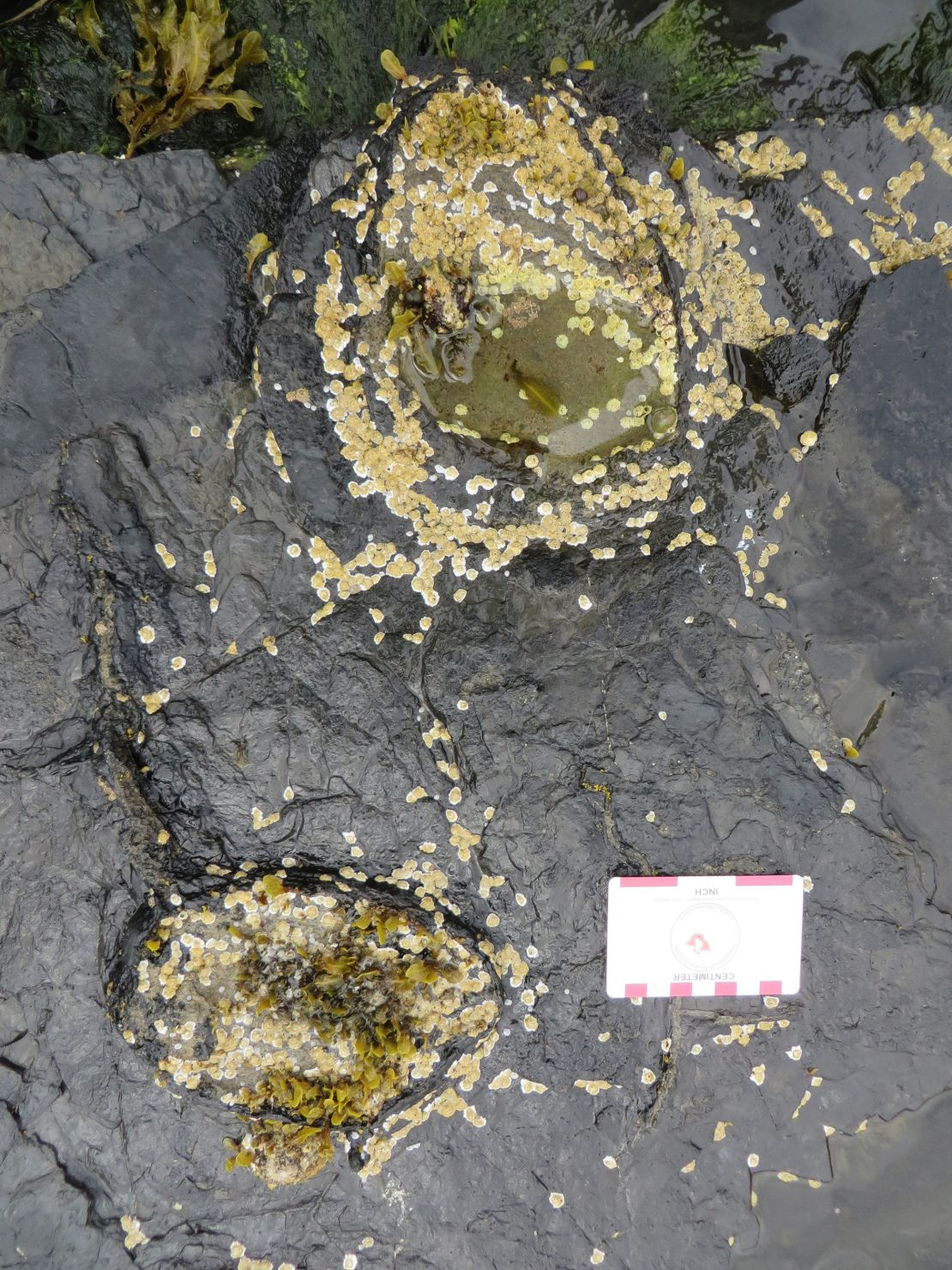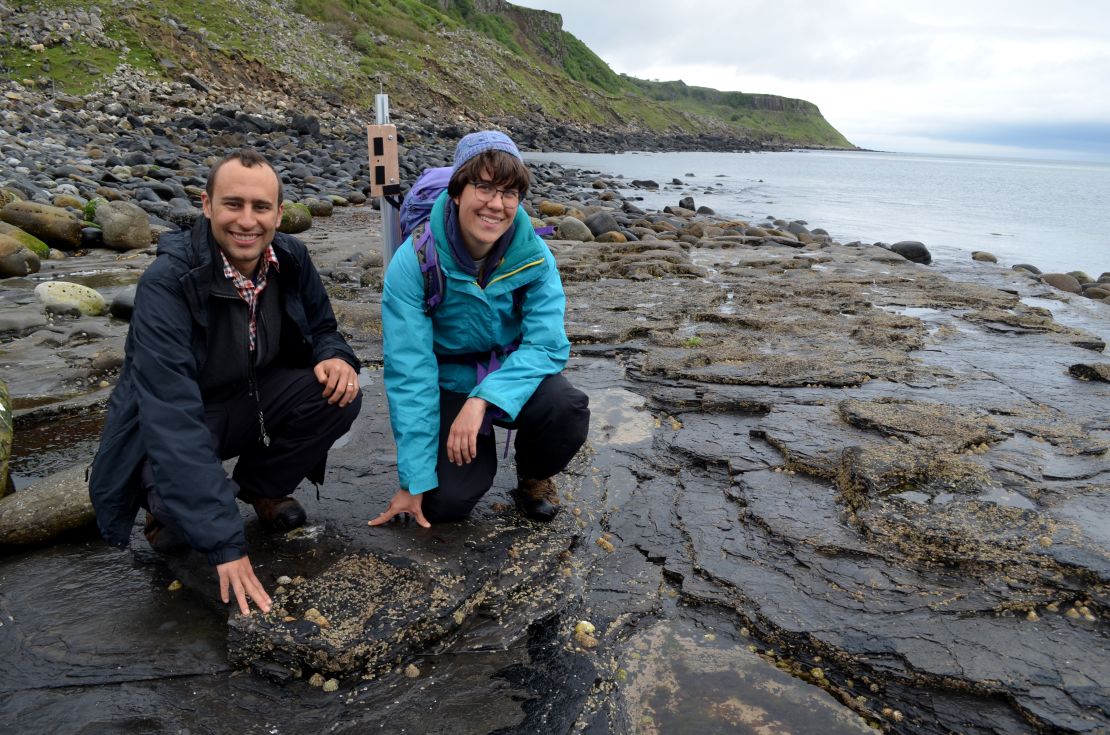Millions of years ago, Scotland’s Isle of Skye was a subtropical lagoon and home to a “thriving community of dinosaurs,” according to a new study. For the first time, researchers traced dinosaur footprints along the island’s northeastern coast and discovered that stegosaurs were part of this community.
Researchers found two different sites containing 50 dinosaur footprints; stegosaur footprints were distinctly identified among them due to their characteristic oval shape. These are called Deltapodus tracks.
When the tracks were made, they sank into the ancient coastal mudflats, only to be covered over as time passed. Storm activity in the past few years revealed them, and the tracks were studied between 2015 and 2017. One site containing footprints is revealed at low tide, although it’s usually swathed in seaweed.The other site was once covered by boulders that were moved by a storm, enabling the discovery of the footprints in 2017.
The study published Wednesday in the journal PLOS ONE, and was supported by a grant from the National Geographic Society.
Stegosaurs were known for sporting diamond-shaped plates, which marched across their backs. They could reach 30 feet long and weighed more than six tons.
Researchers estimate that the footprints date from the Middle Jurassic Period, 170 million years ago. Many well-known types of dinosaurs were diversifying during this period, but fossils from the era itself are rare – except on the island.
The Isle of Skye has yielded dinosaur fossils and footprints in the past at the site where the new footprints were found, specifically those belonging to the Middle Jurassic. It’s called Brothers’ Point, or Rubha nam Brathairean in Gaelic.
This is where the first dinosaur footprint was found in Scotland during the 1980s. The single footprint was found in a piece that had fallen from the Brothers’ Point cliffs. Other tracks found across the island have become tourist attractions.
Previously, they’ve been able to trace the early evolution of armored dinosaurs, long-necked sauropods and the cousins of Tyrannosaurus rex-like carnivorous theropods. Other fossil finds on the island have included sharks, salamanders, turtles, extinct marine reptiles like ichthyosaurs, pleiosaurs and crocodylomorphs.
And finding stegosaurs in Scotland from this time period places these footprints among the oldest in the known fossil record for the dinosaur group.
“These new tracksites help us get a better sense of the variety of dinosaurs that lived near the coast of Skye during the Middle Jurassic than what we can glean from the island’s body fossil record,” said Paige dePolo, lead study author and PhD student at the University of Edinburgh’s School of GeoSciences. “Deltapodus tracks give good evidence that stegosaurs lived on Skye at this time.”

The researchers used drones to study the footprints from above and identify which dinosaurs the patterns belonged to. In addition to the stegosaur footprints, they also spied what looked like tracks belonging to large ornithopods, which are like duck-billed dinosaurs.
The fossil of an extinct flying pterosaur was found at the site of some of the footprints and is currently being studied, the researchers said.
Essentially, their discovery of footprints, combined with previous tracks found on the island, “give us a snapshot of a ‘day in the life’ of a rare Middle Jurassic ecosystem,” the authors wrote in their study. The variety of dinosaur footprints on the island show representatives of all the major dinosaur groups at the time, suggesting that Scotland was a diverse, flourishing environment for dinosaurs.

“Our findings give us a much clearer picture of the dinosaurs that lived in Scotland 170 million years ago,” said Steve Brusatte, field team lead for the study and vertebrate palaeontologist and evolutionary biologist at the University of Edinburgh’s School of GeoSciences.
“We knew there were giant long-necked sauropods and Jeep-sized carnivores, but we can now add plate-backed stegosaurs to that roster, and maybe even primitive cousins of the duck-billed dinosaurs too. These discoveries are making Skye one of the best places in the world for understanding dinosaur evolution in the Middle Jurassic.”






































































































































































